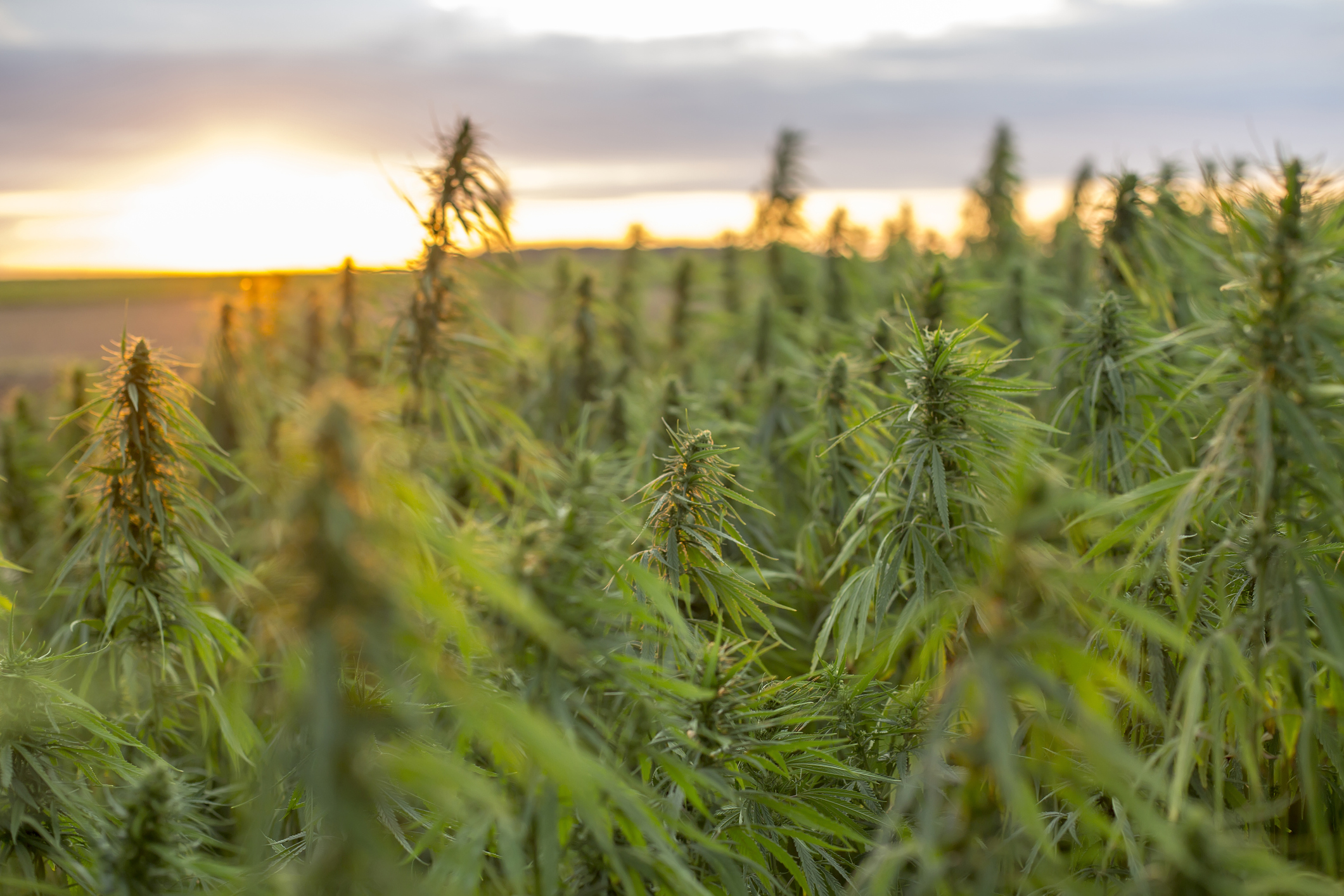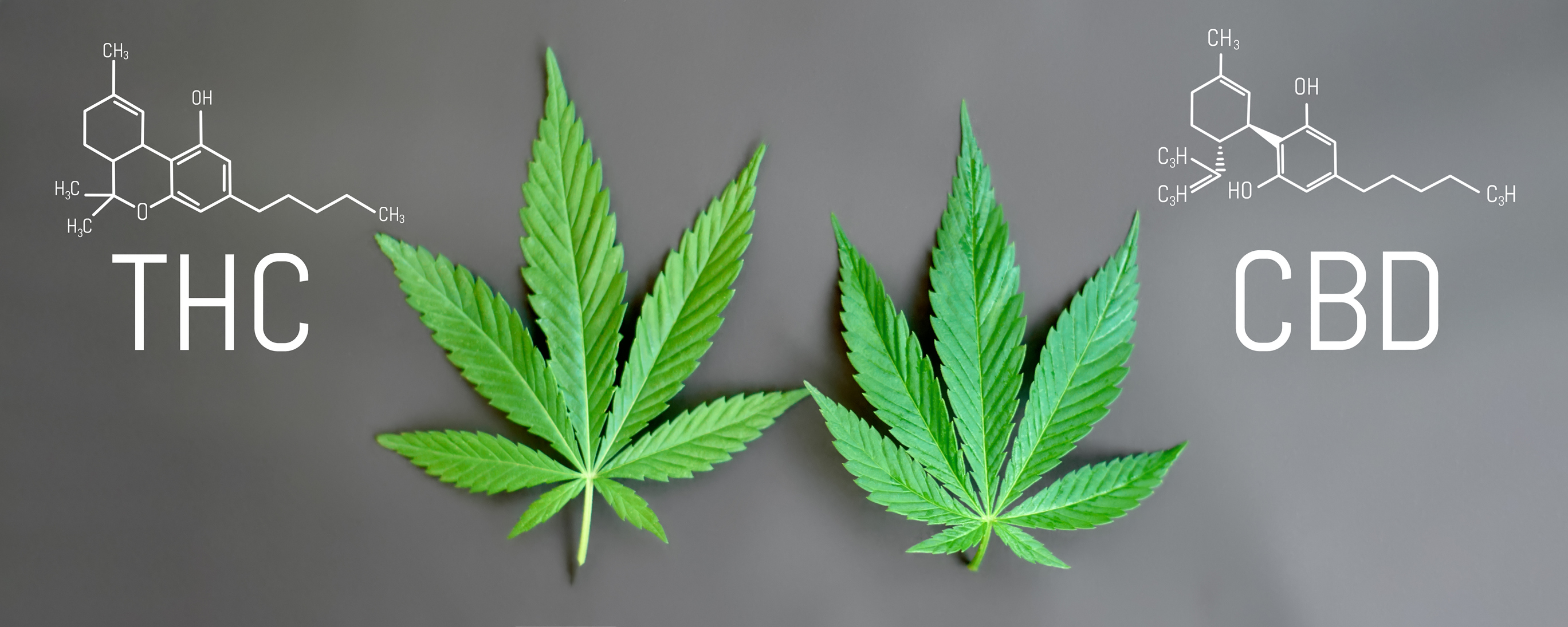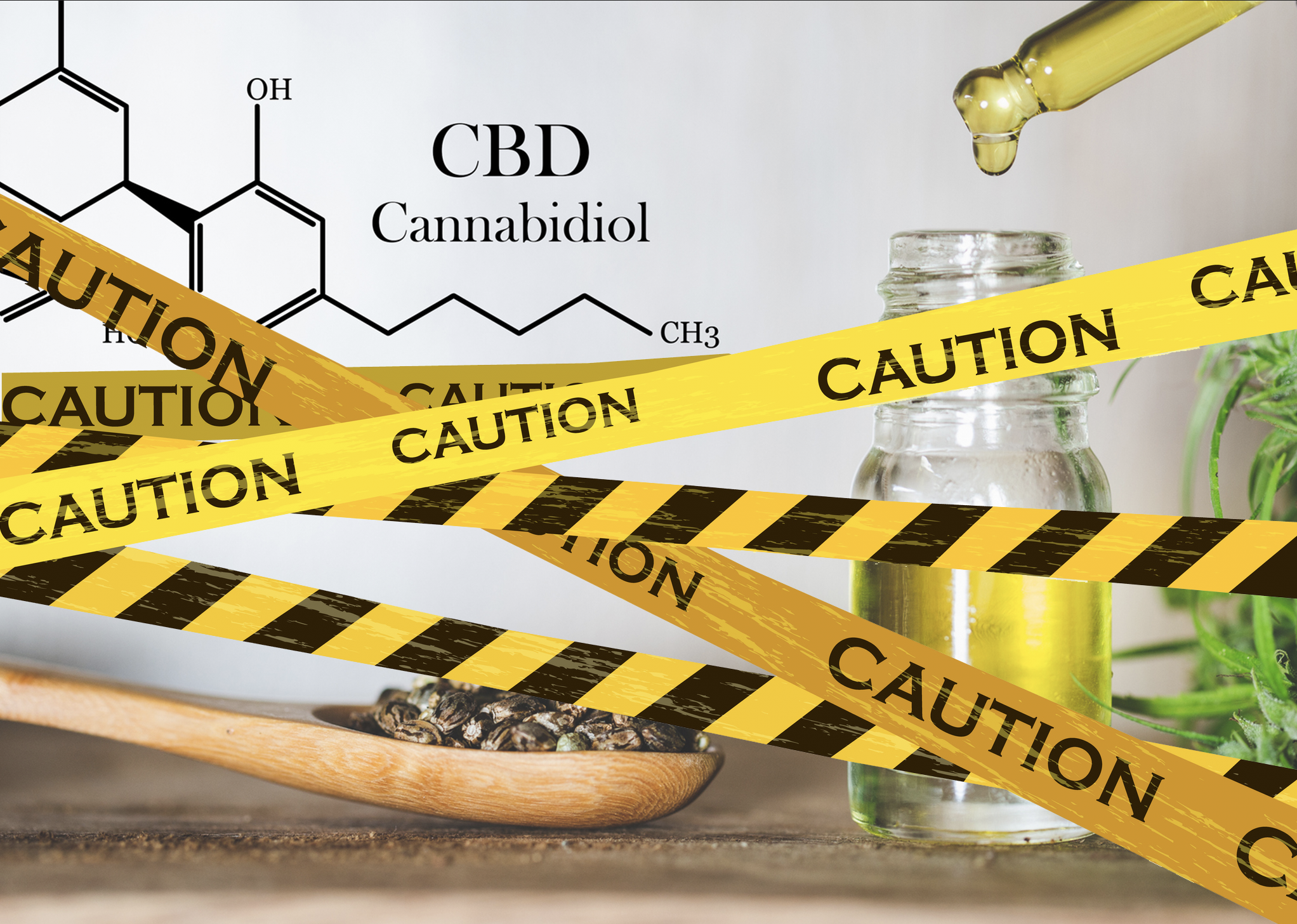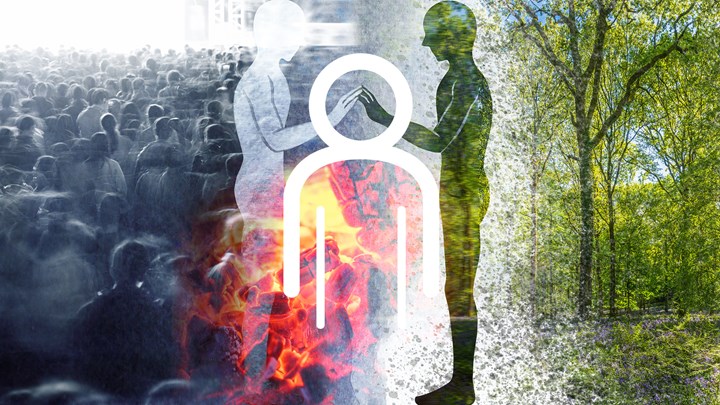Content Sections
By Rob Verkerk PhD, scientific and executive director, ANH-Intl
It can be tough one to get your head around: The vast majority of products in the most rapidly expanding sector the natural health market has witnessed in over two decades - namely hemp-derived products containing cannabidiol (CBD) - are illegal both in Europe and the USA.
Regulators and industry, both sides of the pond, are still trying to sort out some kind of a solution, knowing full well that any attempt to pull products off the shelves will be met by a citizen rebellion, such is the popularity of the products. No surprise, given that so many of us have found that regular use of CBD supplements provide relief from pain, anxiety and countless other disorders without the side effects associated with NSAIDs and opioids.
Equally unsurprising is that Big Pharma was not going to sit back and do nothing when it started to see its market share challenged by foods and supplements that had not navigated drug licensing systems, in the process avoiding the eye-watering associated costs.
This piece is in effect an update to our special report on CBD published last November, focusing especially on new information and perspectives on the regulatory position for CBD supplements, especially in the UK, EU and USA.
No relaxation of legal interpretation in Europe
First things first: in Europe, following the German district court decision that we reported on last November, there’s been, if anything, a hardening, not a softening, of national authority positions on CBD in foods and supplements. Brexit is now just days away, and just as the UK is about to free itself from the Brussels’ chains, albeit with transition periods, the UK food authority, the Food Standards Agency (FSA), has cemented its position as a CBD hardliner at a Westminster Forum in London last week.
To escape the clutches of novel foods, and avoid a complex and expensive pre-market authorisation process that has typically taken over 3 years in the EU, it would be necessary for CBD to be considered as a traditional food. In the UK at least, that case appears to be all but lost.
Reporting on the the fate of CBD food and supplement products as early as February last year, Nutraingredients commented, “Further news reports suggested the UK’s Food Standards Agency (FSA) now want CBD food products removed from commercial sale while the application to permit its use is finalised.”
At last week’s Westminster Forum, the FSA suggested enforcement action might start soon after Brexit Day, 31 January 2020. That might appear ironic to those millions of Britons who voted to exit the EU to avoid over-zealous EU regulation.
The reality isn't always that comfortable; the UK has long been a prime architect of tough EU legislation. Worse than that, it had a historic tendency to ‘gold-plate’ EU laws. Regarding CBD, the UK came together with Germany, France, Italy and the Netherlands in petitioning the European Commission’s Novel Food Working Group and persuading the 17 other EU Member States to back a plan to treat CBD isolates or concentrates as novel foods. The European Commission still uses the FSA classification of CBD as a novel food as its key example, arguing that a history of consumption prior to May 1997 had not been demonstrated for CBD isolates and that the chemical composition of the CBD in CBD supplements was different (surprise, surprise) from the hemp and seed oil starting material from which it was derived.

Most CBD supplements illegal in USA
Despite the generally more liberal approach to supplement regulation in the USA, granted by the current interpretation of the Dietary Supplement Health and Education Act of 1994 (DSHEA) and the subsequent legal victory by leading US constitutional lawyer Jonathan Emord in Pearson v Shalala (1999), the US situation has many similarities to that of Europe. The problem facing CBD is that it was regarded as a drug before it was a dietary supplement. Frankly, we’d all benefit from a successful legal challenge to get that view kicked into the long grass because there’s nothing new about CBD. It’s always been present in hemp oils and seed derived products, albeit in low concentrations.
The US Food and Drug Administration (FDA) asserts its case clearly on its website, emphasising that it has approved only one product, and that’s a prescription drug to treat two rare forms of epilepsy.
While the many thousands of dietary supplements selling on the US market avoid any evaluation by the FDA under DSHEA, the ingredients in them are considered GRAS (Generally Regarded as Safe). CBD however, being regarded as a new dietary ingredient (NDI), isn’t GRAS approved.
This gives the FDA sufficient footing to start hitting out at the CBD industry. The agency likely feels compelled to do so to keep its paymasters in Big Pharma happy. An example of this include it reporting its decision to send out letters to 15 companies for "illegally selling products containing cannabidiol (CBD) in ways that violate the Federal Food, Drug, and Cosmetic Act (FD&C Act)." Even more disconcerting is the inclusion of information about CBD products on the FDA's Health Fraud Scam webpage. 'Heath fraud' has, after all, become the new catchall term used by regulators, international agencies like the World Health Organization, and internet service providers like Google and Facebook to denigrate products that compete with licensed drugs.
In recognising that all CBD products that are labelled as containing CBD are currently illegal, the FDA appears to be interested in finding a lawful pathway to allow the continued sale of CBD products. The supplement industry, botanical associations like the American Herbal Product’s Association and elected representatives in Congress are pushing the FDA hard.
Two pathways are emerging, neither of which have consensus even among those who want no interruption to the sale of CBD products. One involves creating an entirely new regulatory pathway for CBD products that could take several years. The other is the ‘Petersen Bill’ (H.R. 5587) that was introduced to the House fo Representatives on 13 January 2020. It seeks to use the ‘exclusionary clause’ of DSHEA to create a one-off exemption for CBD that is otherwise viewed as an NDI and is not GRAS approved. Both routes have their supporters and detractors, and it may be that both approaches will be required, one delivering a long-term solution, the other short-term continuity.
A new ‘problem’: safety
For two years, companies responsible for the explosion of CBD products have grappled with uncertainty over regulatory status. But what if a view develops suggesting that all this CBD could be causing health problems, not just resolving them? In Europe, probably more than in any other part of the world, safety is taken incredibly seriously - and has often been used time and time again to banish non-medicinal products and supplements from the market, irrespective of the benefits they might provide to citizens. Risk-benefit when it comes to healthcare, we are told, is primarily, the domain of the drug companies - and they pay heavily to play this game. Reminding us just how antiquated the system is, food and food ingredients found to pose any measurable or theoretical risk to health, especially if they’re regarded as non-essential nutrients, are routinely banished from public access in Europe using novel food or medicines law as the legal instrument.
Inevitably, this is an area we’re watching very closely. We have identified three alarm bells that give us cause for concern, made all the more worrying given these are poised either side of the pond. Two are in Europe and one in the USA. All three are generated by heavyweight players in the risk assessment field, all having been linked closely to some of the biggest businesses (in the food and pharma sectors) on the planet.

Alarm 1: BfR, Germany (2018)
On 8 November 2018, the Federal Institute for Risk Assessment in Germany (BfR), published an opinion (No 034/2018) on THC in hemp-containing foods. In essence, what the opinion said was that German consumers could be exposed to excessive levels of ∆9-tetrahydrocannabinol (THC), the psychoactive component in hemp, that occurs only at very low levels (below 0.3%) in most hemp grown as a source of its non-psychoactive cannabinoid relative, CBD. The report went as far as to say that German consumers, just by gorging on hemp-derived foods and supplements, could find themselves in the therapeutic range for THC, which is in excess of 2.5 mg per person per day, also considered by EFSA’s CONTAM panel the lowest observable adverse effect level (LOAEL). These dosages could, claimed the report, induce “psychomotor effects such as reduced reaction capability or tiredness has to be expected in this dose range, restrictions in a person’s ability to drive or operate a dangerous piece of machinery.” That’s the BfR’s take on being ‘stoned’ on cannabis. The BfR also reminded us that the effects could be enhanced by alcohol and certain other drugs - but I have to say that’s never worked for me. For many of us, this BfR report was a classic case of BfR alarmism, much like the German risk assessor’s concern over cinnamon in Christmas cookies. The real headline, however, wasn’t about the risk of getting stoned on CBD products, but that the threshold acute reference dose (ARfD) of a pitiful 1 μg/kg body weight (corresponding to 36 μg Δ9‐THC/kg body weight per day i.e. 30 times the lowest dose that might induce some psychomotor effect in the most sensitive individuals) could be exceeded. Unsurprisingly, this happens because EFSA’s AfRD is set far too low, which it justifies the usual way, by data uncertainty (hence the 30-fold, not, for example 3-fold, uncertainty factor).
Alarm 2: EFSA, EU
On 7 January of this year, EFSA published a new exposure study on THC in hemp-derived products. It appeared comprehensive and relied on data mainly from food authorities but also from industry. When you dig into the risk assessment, the data in some key areas is however thin on the ground, and not always that reliable. It covered 13 food categories, including hemp seeds and oil, herbal teas, breakfast cereals, pasta, bread and rolls, fine bakery, beer and beer-like beverages - and of course CBD supplements. It attempted to rely on data that used the most accurate analytical techniques such as LC-LC/MS and HPLC-DAD, but too bad when that wasn’t available. It then went on to estimate exposure to these foods using 12 different scenarios, with the ‘worst’ case/highest possible intake scenario being the one of greatest importance to the different population groups considered (toddlers, other children, adolescents, adults, elderly and very elderly). So while the concentration is important, the ultimate exposure to the psychoactive THC component depends a lot on how much you consume, and how sensitive is the individual, meaning the exposure assessment for different groups is key. All relatively good so far.
In the key area of dietary supplements, things start getting shaky. There were only 26 samples in total and they were for very different kinds of products, 9 being classified as ‘dietary supplements’ (possibly US sourced), two as vitamin supplements’, 8 as ‘protein and amino acids supplements’ and 7 as ‘plant extract formula’. There were also challenges with different extraction and analytical methods being used, so uncertainty over the limited data was a major problem.
The long and short was that looking at the highest occurrence rates as well as the highest consumer (i.e. ‘worst-case’ exposure), high levels of exposure were found to be possible especially for teas (infusions) (40 to 208 μg THC/kg body weight in adults), hemp oil (3 to 21 μg THC/kg body weight in adults), hemp seeds (2.3 to 9 μg THC/kg body weight in adults), and dietary supplements (1.5 and 9.9 μg THC/kg body weight in adults). Interestingly, many hemp-containing teas, the only category to have been found with a highest case exposure scenario to exceed the EFSA’s own, ultra-conservative AfRD (corresponding to 36 μg THC/kg body weight in adults) were already on the market well before the eruption of CBD supplements on the market in 2017. Not only were the data on which this exposure assessment made very thin on the ground, there is absolutely no guarantee these figures reflect values of THC from reputable manufacturers. There’s also no evidence that anyone has ever experienced psychomotor effects from these very low THC teas.
While EFSA justifies the limitations of its own assessment and makes clear there’s lots more work to do to refine it, the fact is, this opinion will be used as an alarm by parties who find it in their interest. Just don’t tell anyone that it was only the presence of a few unidentified hemp teas, and not the dietary supplements, that sounded the EFSA alarm.
Alarm 3: FDA, USA
The FDA is busy, actively updating its webpages on cannabis and CBD. At the time of writing, it was last updated on 15 January 2020. What’s striking here is the amount of information given about safety concerns. Yes, the USA is a very litigious society, the FDA is the regulator responsible, and FDA officials are aware there is something of a Wild West out there when it comes to CBD products. The key page to review, when starting your journey through the FDA’s electronic assets relating to CBD, is the ‘What You Need to Know (And What We’re Working to Find Out…) page. Here, it’s not just about THC contamination. There’s the full gamut of risks, including dire warning about CBD causing liver injury, side effects “that you might not notice”, drowsiness, gastrointestinal distress, changes in mood such as irritability and agitation and - one for the boys - male reproductive toxicity in males (based on a animal studies - at what dose?).
The FDA information goes on to claim that some CBD products are marketed with unproven medical claims (yes, agreed, but many are more than justified) and “could be produced with unsafe manufacturing practices” which might include exposure to contaminants like heavy metals and pesticides.
There’s a load more to entertain you if you read it all.
The bottom line, in my humble view, is that to disregard this increasing dialogue from the authorities on safety would be a big mistake.
Where to now?
It’s now time for anyone with an interest in this incredibly important sector, as well as freedom of choice, to seriously think about rolling up their sleeves and taking action.
The CBD supplement world now appears to be drifting, from the perspective of regulators, from its ‘you don’t have a regulatory home’ place where it’s been over the last 2 years, to what we think is a much more treacherous place to be: ‘we think your products might be dangerous.’
If you don’t challenge the regulators now, and just accept what they’re throwing at the sector, expect to see very challenging regulatory obstacle courses placed in front of the CBD industry. Expect too to see a requirement for extensive safety studies that might not be much less onerous than those required for drug licensing.
Here are some things you could do, depending on if you’re a consumer or a producer.
If you’re a citizen: buy CBD products from reliable sources who know how much CBD is the product, can confirm they’re sourcing their CBD from low-THC hemp varieties and are free from contaminants. Follow the dosing on the bottle or the advice of qa ualified and experienced health professional - enjoy and diarise your experiences. Then let your elected representative know of your concerns about disproportionate regulation that could remove your access to your favourite CBD products. Tell your stories about your positive experiences with CBD as widely as you can, on social media and other channels. Generally avoid quoting company names, unless a company has agreed that’s OK, so as to reduce the likelihood of the company being targeted by regulators.
If you’re a company: work with other companies, trade associations and ourselves at ANH-Intl to counter the safety challenges being metered out by the likes of the BfR, EFSA and the FDA. That includes knowing exactly how much THC is in your products using accurate analytical methods such as LC-MS/MS, as well as lab reports showing that contaminants are below established thresholds. It’s going to be be necessary to also challenge the view that low dose CBD is responsible to significant harms and that EFSA’s AfRD is unnecessarily low and normal use patterns don’t constitute any significant risk compared with other widely consumed food or herbal ingredients. These data will need to be submitted to your national food regulators and your customers will thank you for telling them, in whatever way you consider appropriate, that you’re on the case.
Find out more:-
If you’re interested in learning more, please join the CBD Global Summit at which I’ll be a panelist in March.








Comments
your voice counts
There are currently no comments on this post.
Your voice counts
We welcome your comments and are very interested in your point of view, but we ask that you keep them relevant to the article, that they be civil and without commercial links. All comments are moderated prior to being published. We reserve the right to edit or not publish comments that we consider abusive or offensive.
There is extra content here from a third party provider. You will be unable to see this content unless you agree to allow Content Cookies. Cookie Preferences